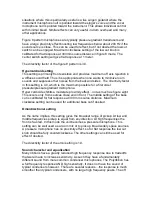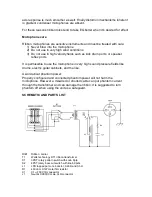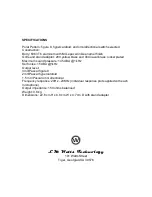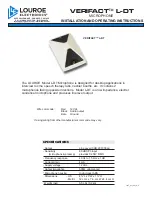
situations where this is particularly useful is a live singer/ guitarist where the
instrument microphone null is pointed toward the singer’s voice and the vocal
microphone null is pointed toward the instrument. This allows individual control
with minimal bleed. Similar effects can very useful in drum overhead and many
other applications.
Figure 8 pattern microphones are typically pressure gradient transducers and
have a large proximity effect boosting low frequencies below about 200 Hz if the
sound source is close. This can be used for effect, but if not desired the low cut
switch can be engaged. Maximum clockwise setting of the low cut knob is
calibrated for flat response at 300mm source distance in figure 8 mode. The
center switch setting will give flat response at 1 meter.
The directivity factor of the figure 8 pattern is 3.0.
Hypercardioid setting
This setting is primarily front sensitive and provides maximum off axis rejection in
a diffuse sound field. Thus it is appropriate when one wants to minimize room
sounds and suppress other noises from the back and sides . The directivity factor
in this setting is 4.0, which is the maximum possible for a first order
pressure/pressure gradient microphone.
Hyper cardioid exhibits a moderate proximity effect…not as much as figure eight.
This occurs only from sources close and in front, The middle setting of the bass
cut is calibrated for flat response at 300 mm source distance. Maximum
clockwise setting can be used for additional bass cut if desired.
Omnidirectional setting
As the name implies, this setting gives the broadest range of pickup. At low and
middle frequencies pickup is equal from any direction. At high frequencies the
front is favored. In this mode the unit becomes a pressure microphone. This
setting can be well used as a room mic or to pick up broad widely space sources.
A pressure microphone has no proximity effect, so for flat response the low cut
knob should be fully counterclockwise. The other settings can still be used for
effect if desired.
The directivity factor of the omni setting is 1.0.
Sound character and equalization
Many ribbons have a greatly reduced high frequency response due to tradeoffs
that were made to increase sensitivity. As such they have a fundamentally
different sound from more common condenser microphones. The Polyribbon has
a full frequency response AND high sensitivity. It does not have the sound of
typical conden
sers however. There are several reasons…the response is much
smoother than typical condensers, with no large high frequency peaks. The off






















